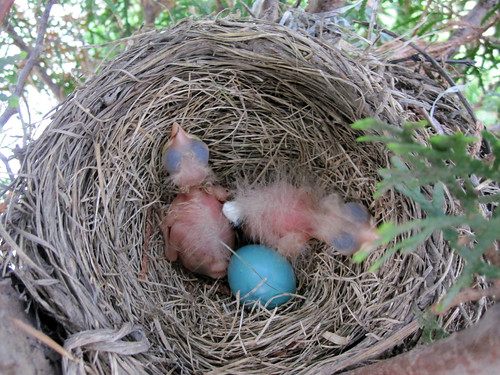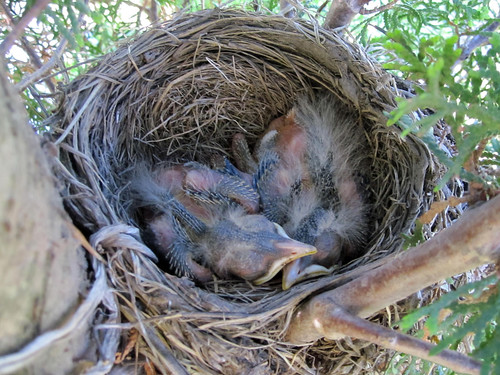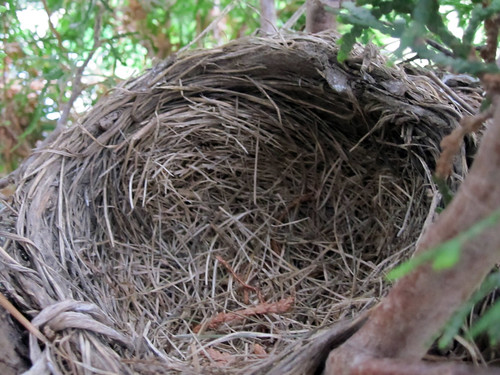For a second year I have been watching an American Robin nest in our front yard. I expected the chicks to hatch this year between May 8th and 14th. Following the discovery of three eggs (down from the original four) in the nest on May 8th, I checked again on May 11th, when I found two freshly-hatched chicks.

American Robin chicks shortly after hatching
I was amazed when I looked back over last year’s observations from this same nest and saw that the babies hatched on the same exact date in 2010!
On May 16th I observed both adult robins make frequent visits to the nest. At one point I saw one of the adults feeding a chick and then consume a fecal sac (“aww…. eww!”). Later in the day I made a quick check inside the nest.

5-day-old American Robin chicks
I was away all day on the 17th so I didn’t note any observations. On the 18th I noticed a lack of activity at the nest. The nest is partially visible from our living room, and even if I wasn’t actively looking at the nest, I could normally notice adults going to and fro in my peripheral vision. I decided to have a quick peek inside the nest.
Oh, how sad! I didn’t see any evidence of the chicks or their eggs on the ground around the nest. The nest didn’t look terribly disturbed so I’m not sure what happened to the chicks, but I suspect predation, possibly by neighborhood crows. American Robins in our area typically have two broods, but they don’t usually reuse a nest twice in the same season. I wish the best for the robins that lost their babies in our front yard, but I know that robins in general are doing quite well in our neighborhood. I was heartened to watch two adult robins attending to a chick in our back yard a couple of days after finding the empty nest.
Life is tough for wild birds, but they do bounce back from what we would consider a terrible family tragedy. If you’ve got nesting birds on your property, don’t forget that you can contribute your observations to science using Cornell’s NestWatch.




